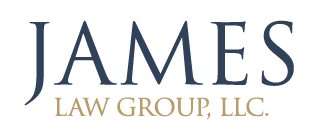Many drivers ignore motor vehicle insurance requirements, cannot afford to purchase insurance or carry insufficient insurance. Uninsured motorist coverage is a form of insurance that pays for bodily injury that results from an accident with a driver who is legally responsible for the injuries but has no liability coverage. Underinsured motorist coverage pays for bodily injury that results from an accident with a driver who has liability insurance with limits that are lower than the injured party’s underinsured motorist coverage limits. If you have been involved in an accident with an uninsured or underinsured driver, it is important that you contact an attorney at an experienced personal injury law firm immediately so you do not waive valuable legal rights.
Uninsured Motorists
Typically, uninsured motorist coverage protects injured drivers if the at-fault driver has no insurance. Uninsured motorist coverage can also apply when someone is injured in an accident with an unidentified hit-and-run vehicle. If a person has uninsured motorist coverage and is in an accident with an uninsured motorist, he or she can collect from his or her insurance company to recoup damages. If you are involved in an accident with an uninsured motorist, you should consult with an experienced personal injury attorney before you file a claim with your insurance company to ensure that you obtain all of the coverage available to you.
Underinsured Motorists
Underinsured motorist coverage provides compensation for injured drivers when the at-fault driver does not have enough insurance coverage to compensate the injured party in full for his or her injuries. An “underinsured motorist” is generally a person who is responsible for the injuries, but who has opted to purchase only the minimum policy required by law. If a person has purchased underinsured motorist coverage is in an accident with an underinsured motorist, he or she may be able to collect from his or her insurance company to recoup damages that are greater than the responsible party’s limits.
Collecting Benefits
In order to collect underinsured or uninsured motorist benefits, a party generally must first establish that the underinsured or uninsured driver was at fault and that he or she suffered significant injuries. In the case of underinsured motorist benefits, the injured party must also collect the at-fault driver’s policy limits before collecting under his or her own insurance policy. An insurance company is typically entitled to a credit for any recovery received from the underinsured motorist’s policy.
Stacking Insurance Coverage
Uninsured and underinsured motorist coverage is “stackable” in some states and under some policies. Stacking uninsured or underinsured motorist coverage may permit a person to add together either insurance coverage from several motor vehicle policies or insurance coverage for several vehicles listed on one policy. In some cases, a person may select stackable coverage at the time he or she purchases the insurance.
Uninsured and underinsured motorist coverage protects a person if someone who does not have adequate insurance injures him or her in an automobile accident. If you are in an accident with someone who is uninsured or underinsured, do not settle with the other driver’s insurance company without first contacting an experienced lawyer. Some underinsured motorist policies are not required to pay if the insured person has settled with the other driver’s insurance company. This can be a very costly mistake. Therefore, you should consult with a personal injury law firm experienced in dealing with automobile accident cases before you settle any portion of your claim. An attorney can provide you with the information and support you need to obtain the best result available to you.
